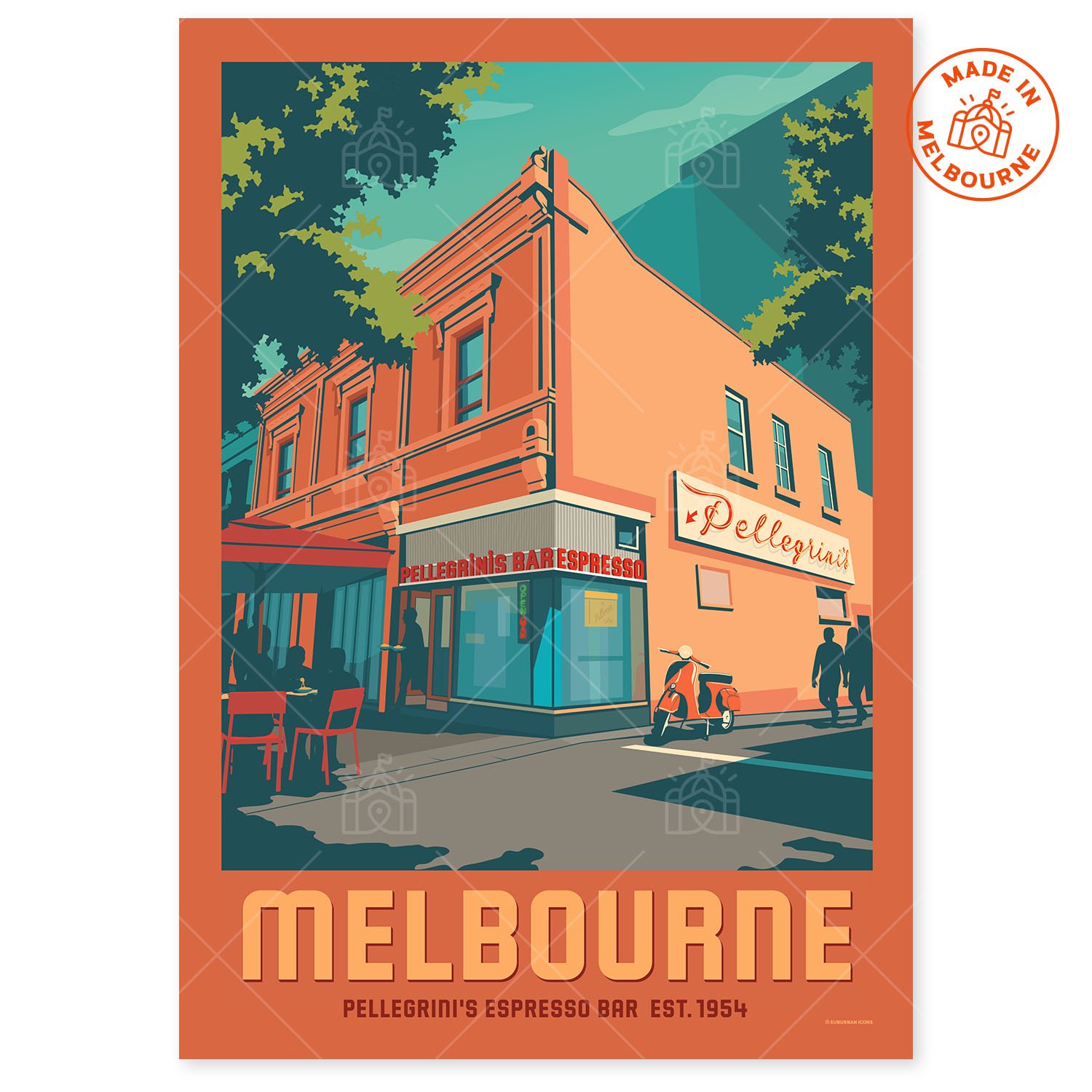






St Paul’s Cathedral Melbourne Suburban Icon Poster
If Flinders Street Station is the racing heart of Melbourne — all horn blasts and run-for-the-train chaos — then St Paul’s Cathedral just across the road is the city’s steady breath. One corner is chaotic movement. The other, calm contemplation.
Rising from the Flinders-Swanston intersection like a medieval mirage, St Paul’s Cathedral is one of the few buildings in Melbourne that still looks like it emerged from the era of Marvellous Melbourne. Built between 1880 and 1891, this neo-Gothic beauty was designed by English architect William Butterfield. It’s Gothic Transitional, they call it — a blend of early English and decorative Gothic elements, like a mashup between a castle from the Middle Ages and high Victorian-era drama.
But this site has always been something of a stage. Back in 1835, the very first Christian service in Melbourne was held here — not in a building, but under a gum tree. A handful of settlers sweating in the vast Australian bush as Dr Alexander Thomson of the Port Phillip Association read scripture while probably swatting flies.
The first church built here — a bluestone building by James and Charles Webb — opened in 1852. It was delayed by the gold rush: no one wanted to be a stonemason when they could be panning for their fortune. By the 1870s, Melbourne was riding high on gold wealth, and Bishop James Moorhouse had bigger dreams. He brought in Butterfield, who never actually visited the site but somehow conjured up a cathedral fit for a booming colonial capital.
Construction began in 1880, but when it opened in 1891, the building was still missing its three now-famous spires. These came in 1933, now part of the city’s famous skyline.
Today, St Paul’s isn’t just a place of worship — it’s a time capsule from the age of gold and grand plans, remaining an architectural icon as the glass and steel towers around it climb ever higher.
This artwork is available in A0, A1, A2, A3, A4. Professional framing is available on A0, A1 and A2 sizes via pick up only.
If Flinders Street Station is the racing heart of Melbourne — all horn blasts and run-for-the-train chaos — then St Paul’s Cathedral just across the road is the city’s steady breath. One corner is chaotic movement. The other, calm contemplation.
Rising from the Flinders-Swanston intersection like a medieval mirage, St Paul’s Cathedral is one of the few buildings in Melbourne that still looks like it emerged from the era of Marvellous Melbourne. Built between 1880 and 1891, this neo-Gothic beauty was designed by English architect William Butterfield. It’s Gothic Transitional, they call it — a blend of early English and decorative Gothic elements, like a mashup between a castle from the Middle Ages and high Victorian-era drama.
But this site has always been something of a stage. Back in 1835, the very first Christian service in Melbourne was held here — not in a building, but under a gum tree. A handful of settlers sweating in the vast Australian bush as Dr Alexander Thomson of the Port Phillip Association read scripture while probably swatting flies.
The first church built here — a bluestone building by James and Charles Webb — opened in 1852. It was delayed by the gold rush: no one wanted to be a stonemason when they could be panning for their fortune. By the 1870s, Melbourne was riding high on gold wealth, and Bishop James Moorhouse had bigger dreams. He brought in Butterfield, who never actually visited the site but somehow conjured up a cathedral fit for a booming colonial capital.
Construction began in 1880, but when it opened in 1891, the building was still missing its three now-famous spires. These came in 1933, now part of the city’s famous skyline.
Today, St Paul’s isn’t just a place of worship — it’s a time capsule from the age of gold and grand plans, remaining an architectural icon as the glass and steel towers around it climb ever higher.
This artwork is available in A0, A1, A2, A3, A4. Professional framing is available on A0, A1 and A2 sizes via pick up only.
If Flinders Street Station is the racing heart of Melbourne — all horn blasts and run-for-the-train chaos — then St Paul’s Cathedral just across the road is the city’s steady breath. One corner is chaotic movement. The other, calm contemplation.
Rising from the Flinders-Swanston intersection like a medieval mirage, St Paul’s Cathedral is one of the few buildings in Melbourne that still looks like it emerged from the era of Marvellous Melbourne. Built between 1880 and 1891, this neo-Gothic beauty was designed by English architect William Butterfield. It’s Gothic Transitional, they call it — a blend of early English and decorative Gothic elements, like a mashup between a castle from the Middle Ages and high Victorian-era drama.
But this site has always been something of a stage. Back in 1835, the very first Christian service in Melbourne was held here — not in a building, but under a gum tree. A handful of settlers sweating in the vast Australian bush as Dr Alexander Thomson of the Port Phillip Association read scripture while probably swatting flies.
The first church built here — a bluestone building by James and Charles Webb — opened in 1852. It was delayed by the gold rush: no one wanted to be a stonemason when they could be panning for their fortune. By the 1870s, Melbourne was riding high on gold wealth, and Bishop James Moorhouse had bigger dreams. He brought in Butterfield, who never actually visited the site but somehow conjured up a cathedral fit for a booming colonial capital.
Construction began in 1880, but when it opened in 1891, the building was still missing its three now-famous spires. These came in 1933, now part of the city’s famous skyline.
Today, St Paul’s isn’t just a place of worship — it’s a time capsule from the age of gold and grand plans, remaining an architectural icon as the glass and steel towers around it climb ever higher.
This artwork is available in A0, A1, A2, A3, A4. Professional framing is available on A0, A1 and A2 sizes via pick up only.
© 2025 Historic Prints / Suburban Icons, part of The Brand Garage, Melbourne. All images and intellectual property remain the property of Historic Prints. No part of this artwork may be copied, reproduced, or distributed without prior permission.



















